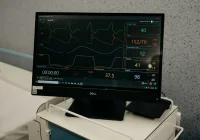Growing administrative demands are stretching clinicians and limiting time with patients. Physicians spend substantial portions of the working day on electronic health records (EHRs) and on paperwork, which undermines access to care and contributes to dissatisfaction. Emerging virtual medical assistants (VMAs) apply artificial intelligence to reduce low-value tasks and surface relevant clinical information at the point of need. By turning EHRs into responsive systems that anticipate workflows, these tools aim to streamline documentation, support clinical decisions and reinforce consistent practice standards. The direction of travel is toward integrated assistants that work in the background of routine encounters, lifting cognitive burden and enabling more meaningful patient interactions without requiring clinicians to learn new technical skills.
Administrative Burden Driving Burnout
Administrative effort occupies a significant share of physicians’ time and fuels burnout. Nearly a third of working time goes to EHRs and administrative tasks. For every eight scheduled patient hours, more than five hours are spent in the EHR. In a separate measure, physicians dedicate an average of 15.6 hours per week to administrative duties, which is close to two full clinical days diverted from direct care. When asked about practice challenges, 66% of physicians report administrative tasks as very or somewhat significant. Taken together, these figures highlight a persistent imbalance between clinical intent and operational reality, where repetitive documentation and navigation across multiple EHR tabs displace attention from patients and strain workforce capacity.
The day-to-day mechanics of information retrieval compound this problem. Building a complete picture from scattered EHR elements often requires clicking through multiple tabs and views, an effort measured in minutes that repeats across each consultation. Even the most capable providers face a steady accumulation of small time losses that collectively erode efficiency and focus. VMAs target this friction by providing rapid, context-aware access to the information clinicians need for the patient in front of them.
From Passive EHRs to Intelligent Assistants
VMAs are designed to integrate with EHR systems and shift them from passive repositories to intelligent, responsive tools. Beyond summarising charts, assistants can answer specific clinical queries in real time, such as whether a statin was previously prescribed and why it was discontinued or whether follow-ups were missed after an abnormal imaging result. By surfacing targeted insights without extra navigation, VMAs reduce chart clutter and help clinicians keep attention on the clinical conversation rather than on system mechanics.
Ambient listening technologies already demonstrate the benefit of automating documentation from patient-provider dialogue, allowing providers to review and finalise notes without excessive manual entry. The next step is deeper integration between VMAs and ambient tools so that assistants interpret real-time conversations and anticipate next actions. If a provider indicates an intention to refill a medication, the assistant can prepare the prescription. If laboratory values enter the discussion, the assistant can retrieve the most recent relevant result automatically. This evolution enables the EHR to participate actively in the encounter, aligning information presentation and task preparation with clinical intent.
Must Read: Algorithmic Consultants to Unlock Safe Clinical AI
Crucially, these capabilities are designed to require no specialised technical knowledge from clinicians. Natural, conversational prompts become the interface for querying histories, confirming follow-ups and initiating routine orders. By meeting clinicians where they work, VMAs reduce cognitive switching between clinical reasoning and administrative navigation, which is a known driver of frustration and time loss.
Embedding Standards to Support Consistency
VMAs can be configured to reflect an organisation’s standards of care and the common patterns of its patient population. Practices can define templates for prevalent chronic conditions so that key metrics appear automatically whenever relevant records are opened. Instead of requiring additional queries, the assistant presents the measures that matter for that condition, promoting consistent assessment and reducing the chance of missing important data points.
Embedding local diagnostic criteria and management protocols within the assistant’s logic further supports alignment with standards. VMAs can compare a patient’s current plan against defined thresholds or follow-up schedules and flag gaps for clinician review. In diabetes care, for example, the assistant can identify patients who fall short of an A1C target or who lack recommended follow-up, prompting timely action without manual chart searches. The intent is not to replace clinical judgement but to provide timely, structured prompts that help maintain consistency across busy clinics.
This approach also helps teams harmonise workflows. By standardising which metrics surface for common conditions and how deviations are highlighted, VMAs support a shared operational baseline even as individual clinicians apply their expertise. The result is a clearer path from information to action, with assistants handling the coordination of data retrieval and protocol checks while clinicians remain focused on patient-centred decisions.
Administrative burden remains a central driver of clinician burnout, reflected in high hours spent on EHRs and paperwork and in the proportion of physicians citing these tasks as significant challenges. VMAs offer a practical route to relief by transforming EHRs into proactive assistants that answer targeted questions, automate routine steps and surface key metrics aligned with local standards. Integrations with ambient documentation further reduce manual effort during encounters. For healthcare teams, the opportunity lies in deploying assistants that enhance, rather than replace, clinical expertise and keep focus on patient needs.
Source: Health IT Answers
Image Credit: Freepik










